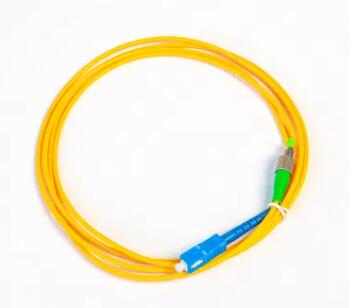What Are the Different Types of Optical Fiber
2023-10-24
Optical fibers come in various types, each designed to meet specific requirements for different applications. The key types of optical fiber include:
1. Single-Mode Fiber (SMF):
- Single-mode fiber is designed for long-distance, high-bandwidth applications. It has a small core (typically around 9 microns) and allows only a single mode or ray of light to propagate through it. This results in minimal dispersion and signal loss, making it suitable for telecommunications and data transmission over long-haul distances.
2. Multimode Fiber (MMF):
- Multimode fiber has a larger core (commonly 50 or 62.5 microns) and allows multiple modes of light to travel through it. While it offers higher light-gathering capacity, it is more susceptible to modal dispersion, which limits its range. MMF is often used for shorter-distance applications within buildings, data centers, and local area networks (LANs).
3. Plastic Optical Fiber (POF):
- POF is made from plastic instead of glass and is typically used for short-distance data transmission, such as in home networks or automotive applications. It's less expensive and easier to work with than glass optical fiber but has lower bandwidth and shorter transmission distances.
4. Step-Index Fiber:
- Step-index optical fiber has a uniform refractive index in the core, which results in a sharp transition between the core and the cladding. This design is more susceptible to modal dispersion and is generally not used for long-distance applications.
5. Graded-Index Fiber:
- Graded-index optical fiber features a core with a refractive index that gradually decreases from the center outward. This design reduces modal dispersion, making it more suitable for shorter-distance, high-bandwidth applications like local area networks.
6. Photonic Crystal Fiber (PCF):
- Photonic crystal fiber is a specialized type of optical fiber with a periodic arrangement of air holes that run along its length. It offers unique properties, such as increased control over dispersion and confinement of light. PCF is used in specialized applications like supercontinuum generation and sensing.
7. Bend-Insensitive Fiber:
- Bend-insensitive optical fiber is designed to minimize signal loss and maintain data transmission quality even when the fiber is bent or curved. It's commonly used in applications where space is limited, and fibers may need to be routed around tight corners.
8. Specialty Optical Fibers:
- There are numerous specialty optical fibers designed for specific applications. Examples include dispersion-shifted fiber (DSF) for reducing dispersion, non-zero dispersion-shifted fiber (NZDSF) for optimizing wavelength performance, and more.
9. Hollow-Core Fiber:
- Hollow-core optical fiber features a core with a central hole or void. It is still an emerging technology with unique properties, such as low latency and potential applications in high-frequency trading, data centers, and telecommunications.
Each type of optical fiber is optimized for specific requirements, such as distance, bandwidth, and environmental conditions. The choice of fiber type depends on the application's demands, and selecting the appropriate type is essential to achieve optimal performance and reliability.



